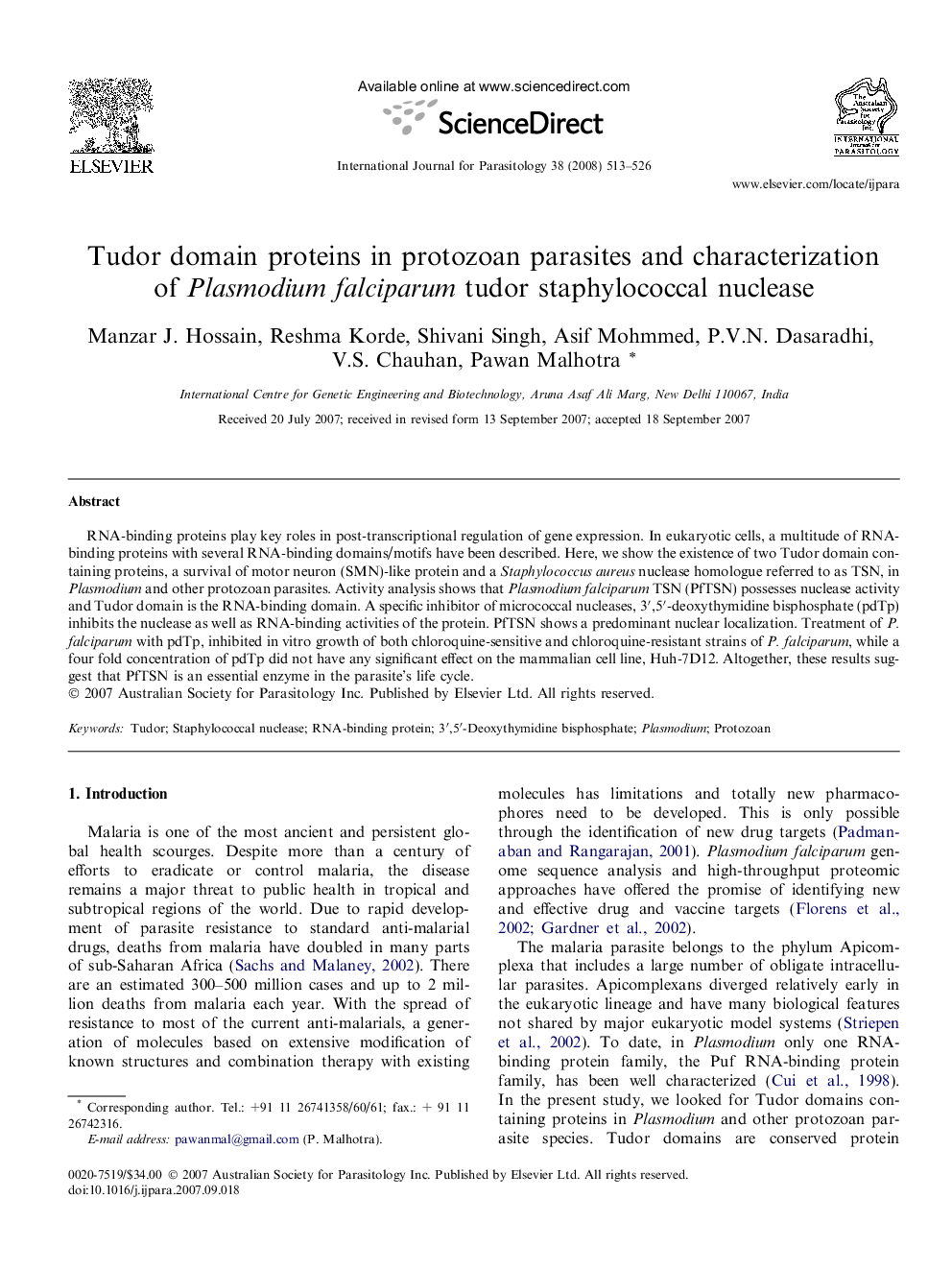| Article ID | Journal | Published Year | Pages | File Type |
|---|---|---|---|---|
| 2436929 | International Journal for Parasitology | 2008 | 14 Pages |
RNA-binding proteins play key roles in post-transcriptional regulation of gene expression. In eukaryotic cells, a multitude of RNA-binding proteins with several RNA-binding domains/motifs have been described. Here, we show the existence of two Tudor domain containing proteins, a survival of motor neuron (SMN)-like protein and a Staphylococcus aureus nuclease homologue referred to as TSN, in Plasmodium and other protozoan parasites. Activity analysis shows that Plasmodium falciparum TSN (PfTSN) possesses nuclease activity and Tudor domain is the RNA-binding domain. A specific inhibitor of micrococcal nucleases, 3′,5′-deoxythymidine bisphosphate (pdTp) inhibits the nuclease as well as RNA-binding activities of the protein. PfTSN shows a predominant nuclear localization. Treatment of P. falciparum with pdTp, inhibited in vitro growth of both chloroquine-sensitive and chloroquine-resistant strains of P. falciparum, while a four fold concentration of pdTp did not have any significant effect on the mammalian cell line, Huh-7D12. Altogether, these results suggest that PfTSN is an essential enzyme in the parasite’s life cycle.
